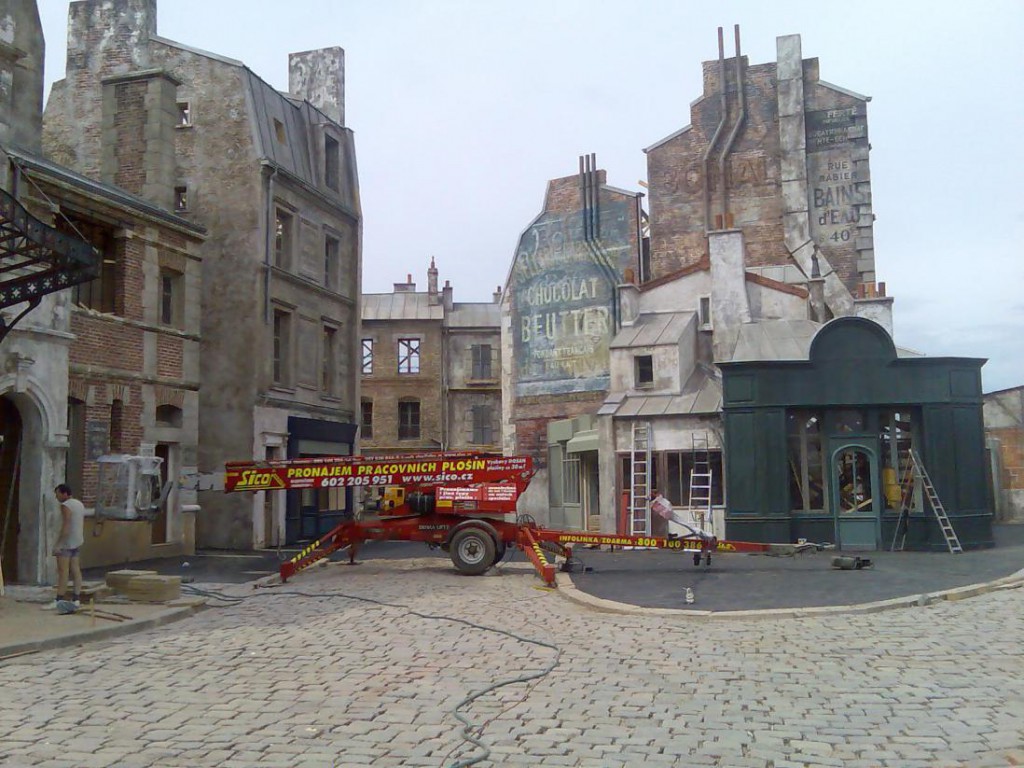The Czech Film Commission visited the filming of the French period film Faubourg 36 on the set in Prague-Letňany. Here, in one of the halls, the sets of the “Chansonia” theatre, in which and around which the film’s story takes place, have been built.
Paris, 1936: Three unemployed theatre staff use the French general strike in order to take over their former home theatre “Chansonia” to present their own programme in it. But they run up against an unscrupulous speculator, who does not desire their success…
The film is being directed by Christoph Barratier, who debuted with the film Les Choristes, which was the most attended French film of 2004 and was also nominated for two Oscars, among other awards. Galatée Films produces the film, Pathé Renn Production, Constantin Film Produktion and Blue Screen Productions are acting as coproducer, the last being also executive producer in the Czech Republic.
The film’s shooting is an important job for the Czech film industry both with regard to the number of filming days and from the perspective of the set and the construction of decorations. The Czech Republic will see 76 of the total 81 shooting days. The production that started with 5 shooting days in July in France will remain in the Czech Republic until October 17th. Extensive backdrops and sets were built here at several locations around Prague. There is some shooting on location, though 80% of the shooting is taking place in built sets, which are all in the Czech Republic. The film’s budget is approx. 28 million EUR, about 25% of which will be spent in the Czech Republic. There is a crew of 150 people working on the film, two-thirds of which are Czechs. There are also 4,500 extras that will be used during shooting and all of them are local.
“A film with such demands on the set construction and extras is very expensive if shooting in France. So we started to look for locations outside of France, where we could shoot the film cheaper but in the same quality. And the Czech Republic was the best choice for several reasons.”, production manager François Hamel explains.
The reasons that were decisive included good accessibility and the distance to Prague from Paris. There are several flights daily, the flight lasts two hours, some actors, for example, can comfortably shuttle between Prague and Paris. In the case of transporting materials by truck it is a question of a day. That would all increase the cost in countries that lie farther east. Another huge plus is Czech experience with work on high-budget projects and on period projects. Last but not least, the Czech Republic is known for the professionalism of its film professionals and the high quality of the set construction. “The main components such as construction, decorations and costumes and also camera and lighting technicians were important for us,” Francois Hamel elaborates, adding: “The extras were also another reason. We need several thousand extras that look like Parisians, which we found in the Czech Republic. In other countries we were looking at, such as Romania or Bulgaria, it could have been a problem since people there are more like southern Mediterranean types.”
The French producers are very satisfied with the cooperation with the Czech partners and with the Czech crew. “They are all completely professional, reliable. They understand the needs of projects like ours. The shooting is very well prepared and takes place without any problems,” Mr. Hamel confirms. But he is sceptical about the Czech Republic’s opportunities and competitiveness as a film destination in the future. “The standard of living in the Czech Republic is already at a very high level and it will certainly continue to rise, and with it also the prices that will approach those in France or Great Britain. It will definitely continue to be attractive for projects with a large range of set construction and decoration or numerous extras. But otherwise producers will be forced to look for cheaper film destinations. The Czech Republic will lose expensive jobs if the government doesn’t introduce some kind of industry support, some incentives. Even a few percentage points which would be returned to foreign producers would suffice. And that is spent in your country again; they don’t take it out with them. I mean how much are we spending only for accommodations, restaurants, and so on. That all returns to your country. On taxes, on publicity influencing tourism and other sectors.”
